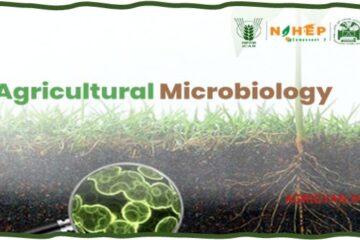General Concepts of Meat Spoilage
Spoilage in Meat refers to the process where meat undergoes changes that make it unsafe or undesirable for consumption. This spoilage can occur due to several factors, including enzymatic activity, microbial growth, and improper handling during slaughter and processing.
- Types of Changes in Raw Meat:
Raw meat can undergo several types of changes:- Enzymatic Activity: Raw meat contains its own enzymes that can break down the meat, leading to changes in its texture and flavor. Additionally, microorganisms can act on the meat and cause spoilage.
- Autolysis: This is the process of enzymatic breakdown in meat, especially in beef, which contributes to tenderness. However, this process is generally undesirable in other types of meat. Excessive autolysis can lead to “souring,” which is characterized by a sour smell.
- Microbial Action: Microorganisms such as bacteria can cause meat to spoil. This microbial action is influenced by the initial microbial load (the number of microbes present initially), the method of slaughter, and the way the meat is handled during processing.
Influence of Slaughter and Processing on Meat Spoilage
The way animals are slaughtered and the way meat is processed can significantly impact the spoilage of meat:
- Gut Load: A higher microbial load in the animal’s gut can lead to greater tissue contamination. To reduce this risk, it is recommended to withhold food from the animal before slaughter, a practice known as pre-slaughter starvation.
- Animal Condition: If the animals are excited or stressed before slaughter, they tend to have higher bacterial loads and changes in tissue chemistry, making the meat more prone to spoilage.
- Bleeding Method: Proper bleeding during slaughter reduces bacterial contamination and improves meat quality.
- Cooling Rate: Rapid cooling of meat after slaughter minimizes microbial growth, which helps in preserving the quality of meat.
Microbial Contamination and Growth
Microbial contamination is a major factor in meat spoilage. It occurs due to several reasons:
- Sources and Spread of Microorganisms: Microorganisms can come from the animal’s exterior, its intestinal tract, or from various processing equipment. These microorganisms can spread throughout the meat via the blood, lymph, connective tissues, and during processes like grinding.
- Factors Affecting Microbial Growth:
- Contamination Level: The type and amount of microorganisms present on the meat significantly affect the extent of spoilage.
- Physical Properties: Factors such as the exposed surface area of the meat, fat content, and the process of grinding can increase microbial growth.
- Chemical Properties: The moisture content, pH level, and availability of nutrients in the meat can influence the growth of microbes.
Types of Spoilage in Meat
There are different types of spoilage that can occur in meat:
- Aerobic Spoilage:
- Surface Slime: This type of spoilage is caused by bacteria like Pseudomonas and Acinetobacter. It usually occurs when there is sufficient moisture and an appropriate temperature.
- Color Changes: Due to bacterial activity, meat pigments can change, resulting in colors such as green, brown, or gray.
- Fat Changes: When fats in meat oxidize, they can become rancid, causing off-flavors and odors.
- Phosphorescence: This is a rare type of spoilage caused by luminous bacteria like Photobacterium spp., which causes the meat to glow.
- Yeast Spoilage:
- Sliminess: The growth of yeasts on the surface of the meat can create a slimy texture.
- Discoloration: Yeasts can cause various colors on the meat, including white, cream, pink, or brown.
- Mold Spoilage:
- Stickiness and Whiskers: In the initial stages, mold growth can make the meat sticky and develop fuzzy growth.
- Spots and Patches: Molds can create black, white, or green patches on the meat surface.
- Fat Decomposition: Molds can break down fats, leading to rancidity and spoilage.
- Anaerobic Spoilage:
- Souring: This type of spoilage occurs due to the production of organic acids like lactic acid or butyric acid by bacteria, resulting in a sour smell.
- Putrefaction: Anaerobic decomposition of proteins in the meat produces foul odors and gases like hydrogen sulfide and ammonia.
Spoilage in Different Types of Meats
Different types of meat can spoil in various ways:
- Fresh Meats: Fresh meats like beef and pork are commonly spoiled by bacteria such as Pseudomonas, Acinetobacter, Moraxella, and Lactobacillus.
- Cured Meats: Cured meats are treated with curing agents to inhibit spoilage. However, they can still spoil due to factors like microbial growth, gas production, and discoloration.
Prevention and Management of Meat Spoilage
To prevent spoilage and extend the shelf life of meat, the following practices can be adopted:
- Sanitation: Maintaining proper hygiene during slaughter, processing, and storage is crucial to minimize microbial contamination.
- Temperature Control: Keeping meat at the correct refrigeration temperatures slows down microbial growth and reduces spoilage.
- Packaging: Using appropriate packaging materials helps limit the exposure of meat to oxygen and moisture, which can contribute to spoilage.
- Curing and Preservation: Using curing agents and other preservation methods can inhibit microbial growth and extend the shelf life of meat.
Note: this article, keeping in mind that it’s targeted at students preparing for food safety officer exams and FSSAI (Food Safety and Standards Authority of India) exams.
Get in touch:- If you find any issues or have a question, please contact us at: info@agrigyan.in or leave a comment under this post.
Feedback:- We welcome your thoughts after reading this post. Please share any feedback that could help us improve the website for a better experience here: [Click here]





Community Discussion
Share your farming experiences and insights